In my experience, conversations about utilities usually put everyone a little bit on edge. And once we start talking to folks about sticking a product like the Silva Cell underneath the sidewalks where their utilities run, some people would love to stop the conversation altogether. But using the Silva Cell in areas with utilities isn’t all that complicated, you just need to get the right people involved from the outset.
One important point to make prior to any discussion of strategies for integrating Silva Cells and utilities is that the respective utility owners need to be involved in the conversation. They may have specific requirements that need to be addressed, such as vertical and/or horizontal separation, minimum depth/cover, or protective measures such as encapsulating their lines in granular bedding or insulating them to prevent freezing. In the event that Silva Cells will be installed over utility lines it is also important to discuss what level of loading or ground pressure the utility line can withstand.
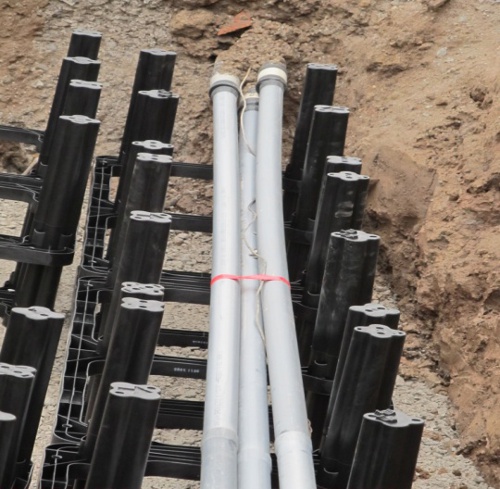 Because each Silva Cell frame has huge openings on all four sides and because there is a considerable amount of void space in each frame, running utilities through the Cell frames is one of the simplest design solutions for integrating utilities directly in to the system. This approach can be applied to new or existing utilities. Each frame is its own discrete component and can be slid underneath or around existing utilities on their sides and then rotated upwards, leaving the utility inside of the frame.
Because each Silva Cell frame has huge openings on all four sides and because there is a considerable amount of void space in each frame, running utilities through the Cell frames is one of the simplest design solutions for integrating utilities directly in to the system. This approach can be applied to new or existing utilities. Each frame is its own discrete component and can be slid underneath or around existing utilities on their sides and then rotated upwards, leaving the utility inside of the frame.
If the alignment or height (elevation) of a utility will prevent it from being run through the Silva Cells, the system layout can be adjusted to leave an opening for the utility. The resulting gap between the frames can then be either spanned with a concrete slab (see our gap bridging detail) or isolated on with geogrid on all sides and filled with a column of clear stone.
Depending on the depth of the Silva Cell system or the number of layers of frames, Silva Cells can be placed on either side of a utility until there is enough clearance over the utility for a frame to be placed over it.
Lastly, another simple strategy is to create a utility corridor adjacent to the Silva Cells or in an open area either on the roadway side or the building side of the Silva Cells. This works especially well if there are new utilities being installed as part of the project or if there will be utilities installed in the future. Empty conduits or ducts can be installed at the time the Silva Cells are being installed and the new lines pulled in through them in the future.
In my experience, conversations about utilities usually put everyone a little bit on edge. And once we start talking to folks about sticking a product like the Silva Cell underneath the sidewalks where their utilities run, some people would love to stop the conversation altogether. But using the Silva Cell in areas with utilities isn’t all that complicated, you just need to get the right people involved from the outset.
One important point to make prior to any discussion of strategies for integrating Silva Cells and utilities is that the respective utility owners need to be involved in the conversation. They may have specific requirements that need to be addressed, such as vertical and/or horizontal separation, minimum depth/cover, or protective measures such as encapsulating their lines in granular bedding or insulating them to prevent freezing. In the event that Silva Cells will be installed over utility lines it is also important to discuss what level of loading or ground pressure the utility line can withstand.
 Because each Silva Cell frame has huge openings on all four sides and because there is a considerable amount of void space in each frame, running utilities through the Cell frames is one of the simplest design solutions for integrating utilities directly in to the system. This approach can be applied to new or existing utilities. Each frame is its own discrete component and can be slid underneath or around existing utilities on their sides and then rotated upwards, leaving the utility inside of the frame.
Because each Silva Cell frame has huge openings on all four sides and because there is a considerable amount of void space in each frame, running utilities through the Cell frames is one of the simplest design solutions for integrating utilities directly in to the system. This approach can be applied to new or existing utilities. Each frame is its own discrete component and can be slid underneath or around existing utilities on their sides and then rotated upwards, leaving the utility inside of the frame.
If the alignment or height (elevation) of a utility will prevent it from being run through the Silva Cells, the system layout can be adjusted to leave an opening for the utility. The resulting gap between the frames can then be either spanned with a concrete slab (see our gap bridging detail) or isolated on with geogrid on all sides and filled with a column of clear stone.
Depending on the depth of the Silva Cell system or the number of layers of frames, Silva Cells can be placed on either side of a utility until there is enough clearance over the utility for a frame to be placed over it.
Lastly, another simple strategy is to create a utility corridor adjacent to the Silva Cells or in an open area either on the roadway side or the building side of the Silva Cells. This works especially well if there are new utilities being installed as part of the project or if there will be utilities installed in the future. Empty conduits or ducts can be installed at the time the Silva Cells are being installed and the new lines pulled in through them in the future.

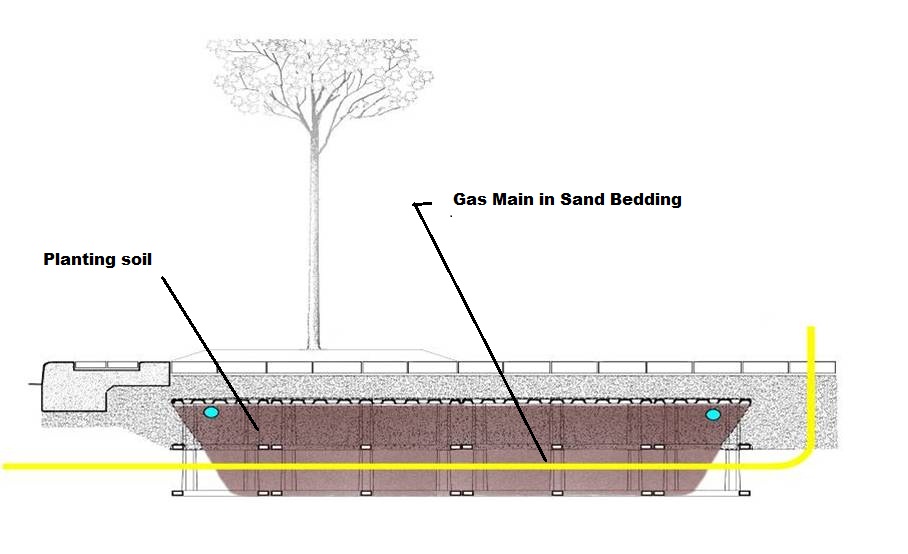
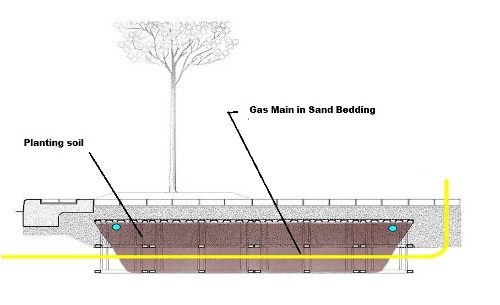
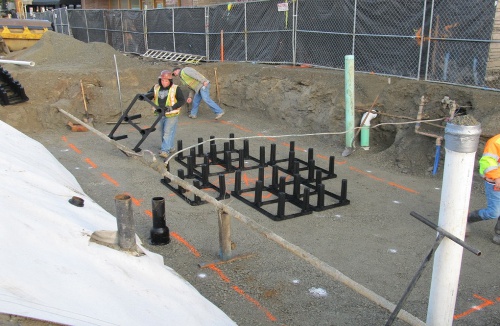
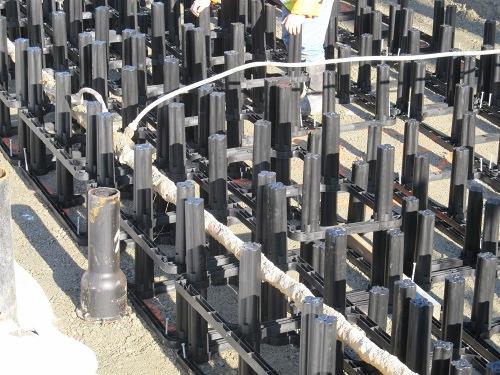
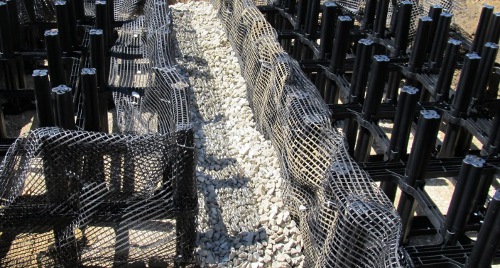
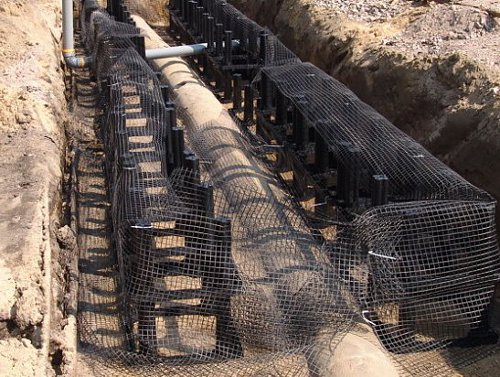
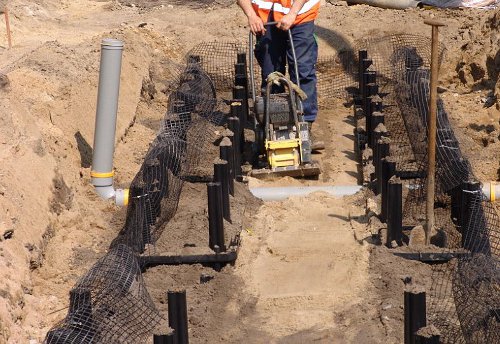
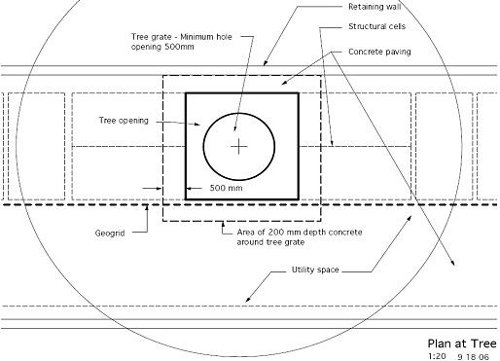




Nice you used my photos (the latest) of the project Veenedaal in Holland.